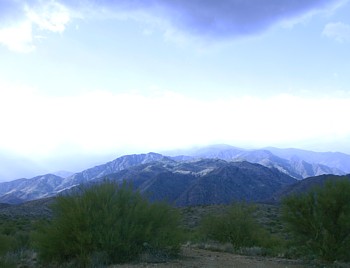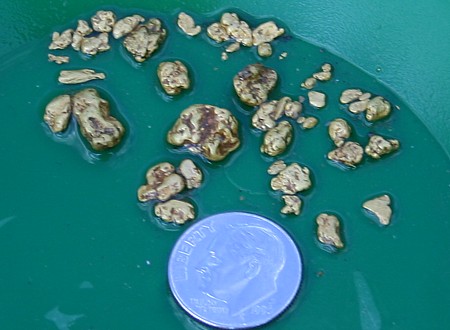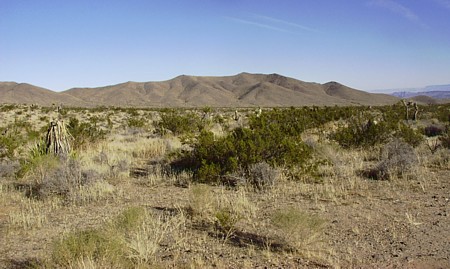
Arizona has produced some nice gold from a series of placers. It has become famous in recent years as a hot spot for prospectors armed with metal detectors. I have not had the chance to spend loads of time in Arizona, but I have done some prospecting there, and I did produce some nice gold. This page has notes about my experiences, information and maps covering the placers of Arizona.
Gold Nugget Detecting In Arizona
The desert areas of Arizona are ideally located for nugget hunting. Rich placers have been found in several parts of Arizona, the best known are located at: Lynx Creek, Weaver (Rich Hill), La Paz and Greaterville. Many Arizona prospectors are interested in nugget shooting for gold with a metal detector. Minelab Pulse Induction (PI) metal detectors are very popular in AZ. While very few will strike it rich, there is some very nice gold out there to be found - its a fun and exciting hobby, but patience and skill are required. Gold just does not occur here and there spread over everywhere, so before one can find gold, you have to know where to look. While this info may get you started, further details on the claims and land status of the goldfields can be obtained from the regional office of the BLM, located in Phoenix, or through the internet at the BLM's LR2000 website. Click on the highlighted topic links below to access the information I have assembled for you to review. Good luck in your prospecting and may you find that big nugget that's out there waiting for you!

The Bradshaw Range in central Arizona gives rise to a number of important gold districts all along it's length. The gold districts located in the Bradshaw range are among the most productive placer fields in the state, and still yield gold to individual prospectors working there. Important gold districts in this area include Lynx Creek, the Big Bug Creek area, the upper Hassayampa River system, the Groom Creek placers, the Black Canyon placers and several others.
Perhaps the first discovery of gold in the Bradshaw range was made at Lynx Creek in 1863 by a party of California miners headed by Captain Joe Walker. Lynx Creek was very rich in certain areas, and successful prospectors recovered an ounce or more per day in the early days. Word spread and additional miners came to work the area. Over the next five to 10 years, additional placer deposits were discovered in many other creeks draining the Bradshaw mountain range, with the highest period of placer mining activity occurring in the 1870s and 1880s. At times, several hundred men were working in the various gold districts around the Bradshaw range. Dredging was done along Lynx Creek in the early part of the 1900s.

While some of the early mining work in this area was done by sluicing or rocking during the times and seasons when water was available, the vast majority of the work placer mining in this area has been done by dry washing, at least until recent years. Virtually all of the dry washing here has been done by small scale miners who travel from site to site searching for richer deposits and pockets of gold. In more recent times, metal detecting has become very important method for finding gold in the Bradshaw range, and metal detector operators commonly rework the tailings piles of older dry washing operations for missed nuggets.
Because of its proximity and easy access from Phoenix, there are many private placer claims which have been located in the Bradshaw range. There are also some club claims located here, which provide access for prospectors who belong to those clubs. Additionally there is also a significant amount of private land, especially the lands closer to Highway 17. These areas are undergoing continued real estate development and more and more new homes are being constructed in the area. the for service has placed numerous restrictions concerning prospecting on Lynx Creek. Before attempting to prospect in the Bradshaw mountains area, it is important to know the land and claim status of the are you intend to explore.



تعليق